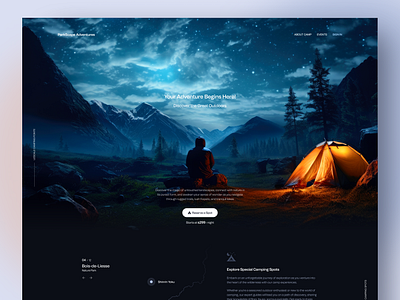Key Elements to Consider When Crafting an Effective Web Design Strategy
Key Elements to Consider When Crafting an Effective Web Design Strategy
Blog Article
Elevate Your Online Presence With Sensational Internet Layout Tips and Trends
The interaction of visual allure, present style patterns, and customer experience plays a pivotal duty in accomplishing this goal. The nuances of efficient style prolong beyond aesthetic appeals; understanding key approaches for optimization can significantly impact your success.
Significance of Visual Appeal
This statistic highlights the vital duty that aesthetics play in individual engagement and retention. Effective visual design incorporates aspects such as shade schemes, design, images, and typography, all of which contribute to a attractive and natural user experience.
Furthermore, an aesthetically appealing internet site infuses a feeling of reliability and professionalism and trust. Users are most likely to trust a website that looks well-structured and sleek, which can substantially impact conversion prices. On the other hand, a unpleasant or chaotic layout can lead to high bounce rates, as users might regard the internet site as unreliable or obsolete.
Moreover, the aesthetic aspects of a web site can communicate brand identity and values (Web design). Regular use branding aspects, such as logo designs and shade schemes, reinforces recognition and fosters a deeper connection with the target market. To conclude, focusing on visual appeal is essential for producing interesting, trustworthy, and brand-aligned online experiences that resonate with customers
Present Layout Trends
Modern internet style is regularly progressing, and staying updated with present fads is crucial for creating impactful online experiences. One famous pattern is the increase of minimalism, characterized by tidy lines, ample white space, and a concentrate on important aspects. This method not just enhances functionality yet likewise enables content to take spotlight.
Additionally, dark mode user interfaces have actually acquired appeal, offering individuals with a visually striking choice while minimizing eye strain. This pattern straightens well with individual choices, providing a contemporary aesthetic that is both elegant and useful.
Another noteworthy trend is the unification of vibrant typography. Developers are increasingly making use of huge, meaningful font styles to create visual power structure and share brand name messages effectively. Coupled with dynamic shade combinations, this trend adds dynamism to internet pages.

Vital Design Aspects
Effective internet style rests on numerous crucial style aspects that with each other create a appealing and cohesive individual experience. The initial of these elements is format, which dictates just how content is organized on the page. A well-structured layout not only improves readability but additionally overviews users through the site perfectly.
Shade plays a critical role in style, influencing emotions and brand name perception. A harmonious shade combination can stimulate particular sensations and develop an aesthetic hierarchy, consequently accentuating vital aspects. Likewise, typography is crucial; the option of font styles need to line up with the brand identification and guarantee readability across tools.
Additionally, whitespace is usually overlooked but is important for developing equilibrium. It aids protect against mess, allowing individuals to concentrate on the essential aspects without diversion.
Finally, uniformity throughout all design elements enhances brand name identity and makes navigating intuitive. By diligently integrating these necessary design components, web developers can create functional and visually appealing websites that astound visitors and encourage communication.
Customer Experience Optimization
A seamless customer experience is essential for retaining visitors and driving conversions on a website. Enhancing individual experience (UX) involves recognizing your target market and tailoring style elements to satisfy their requirements effectively. Trick parts of UX optimization include intuitive navigation, quick loading times, and clear phone calls to activity.
To enhance navigation, make sure that menus are organized logically and easily accessible from any web page. Incorporate breadcrumb routes to help individuals easily backtrack, lessening disappointment. Rate is one more critical official website variable; internet sites must fill within three secs to avoid individuals from deserting the website. Utilize devices like photo compression and internet browser caching to maximize load times.
Additionally, your site's layout must go to website focus on quality. Use understandable typefaces, contrasting shades, and whitespace to produce an aesthetically enticing format that overviews individuals through content effortlessly. Phone call to activity must be prominently displayed, making use of actionable language that urges users to involve.
Mobile Responsiveness Methods
Virtually half of all internet traffic currently originates from mobile tools, highlighting the relevance of carrying out robust mobile responsiveness strategies. To make certain optimal individual experience across different display sizes, internet designers need to welcome a fluid grid design that adapts effortlessly to different gadgets. This technique enables material to restructure and resize without compromising functionality or appearances.
Incorporating flexible photos and media inquiries is vital. Pictures must immediately change their size according to the viewport, while media queries can identify device characteristics and apply tailored CSS designs as necessary. This method boosts load times and ensures that individuals have an aesthetically enticing experience.
Furthermore, focus on touch-friendly navigating aspects. Buttons find more information and links ought to be easily tappable, with appropriate spacing to prevent misclicks. Avoiding hover-dependent communications further improves use on touchscreens.
Lastly, performing routine screening across numerous gadgets and internet browsers is crucial. Tools like Google's Mobile-Friendly Test can aid recognize locations requiring improvement. By taking on these mobile responsiveness strategies, companies can improve user involvement, boost search engine positions, and ultimately drive conversions, consequently raising their online existence successfully.
Conclusion
By focusing on aesthetic charm with existing design trends and essential elements, businesses can promote integrity and involvement. Enhancing individual experience and making sure mobile responsiveness are critical for facilitating seamless communication throughout devices.

Conversely, a cluttered or unappealing design can lead to high bounce prices, as users might perceive the site as undependable or out-of-date. - Web design
Reliable web style pivots on several crucial design elements that together develop a cohesive and interesting user experience. Optimizing user experience (UX) entails recognizing your target market and tailoring style components to meet their needs effectively.
Report this page